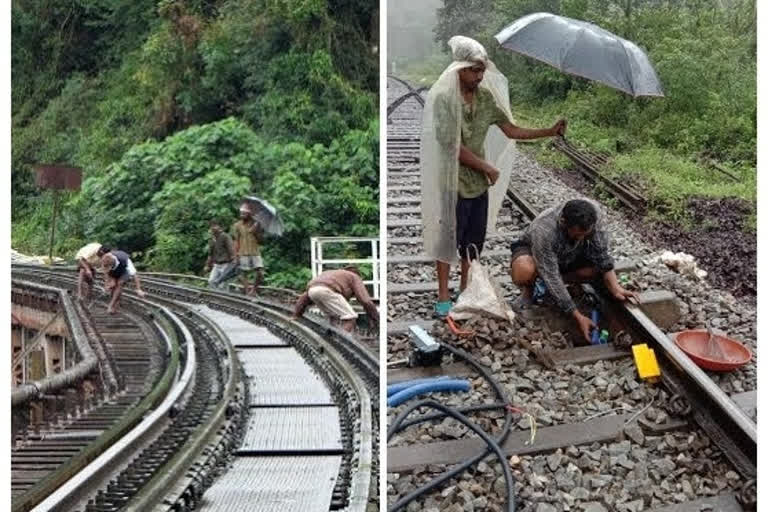Bengaluru: With a view to overcoming the critical infrastructural deficiency hampering train operations at an optimal level, South Western Railway, Mysuru Division has introduced an upgraded signalling project in the Ghat section for enhanced safety.
An SWR official disclosed that this work was executed at a cost of Rs 4.4 crore, which was borne by Hassan-Mangalore Rail Development Company Limited.
"The Multi-Section Digital Axle Counter (MSDAC) technology commissioned between Yedakumari and Kadagaravalli stations on the Sakaleshpur-Subramanya Road Ghat Section on October 1 in record time will significantly enhance the sectional line capacity," a note released by the SWR stated.
South Western Railway, Mysuru Division Divisional Railway Manager, Aparna Garg asserted that the introduction of the new safety protocol will pave the way for safer and more efficient train operations in the Ghat section where the demand for new passenger services is being made persistently.
READ: Preparations on to ensure smooth by-poll for Baroda constituency
According to the note, nearly 35 per cent enhanced capacity would help in introducing additional passenger services and also the operation of freight trains will be more efficient as detentions are brought down. "The new technology greatly reduces the maintenance of track circuits in the inhospitable terrain of the Ghat section," the note further read.
"The MSDAC is a cutting-edge technology designed for train detection with added safety features. The maintenance costs are comparatively lower with a high degree of reliability so much essential for seamless train operations in Ghat section," an official stated.
He further added that this was a daunting task in the face of the Covid-19 pandemic. "Unprecedented rainfall in the area - 6,000 mm since the commencement of work - compounded the already delicate situation," the official said.
According to the official, difficulty in moving skilled manpower for specialised work in the Ghat section, non-existent road connectivity to transport cables, location boxes, MSDAC equipment, fear of landslides at the time of trenching for laying cables, lengthy tunnels, steel girder bridges, rocky topography, dependence on DG sets for power, etc were some of the biggest challenges surmounted during the execution of the work.
IANS



